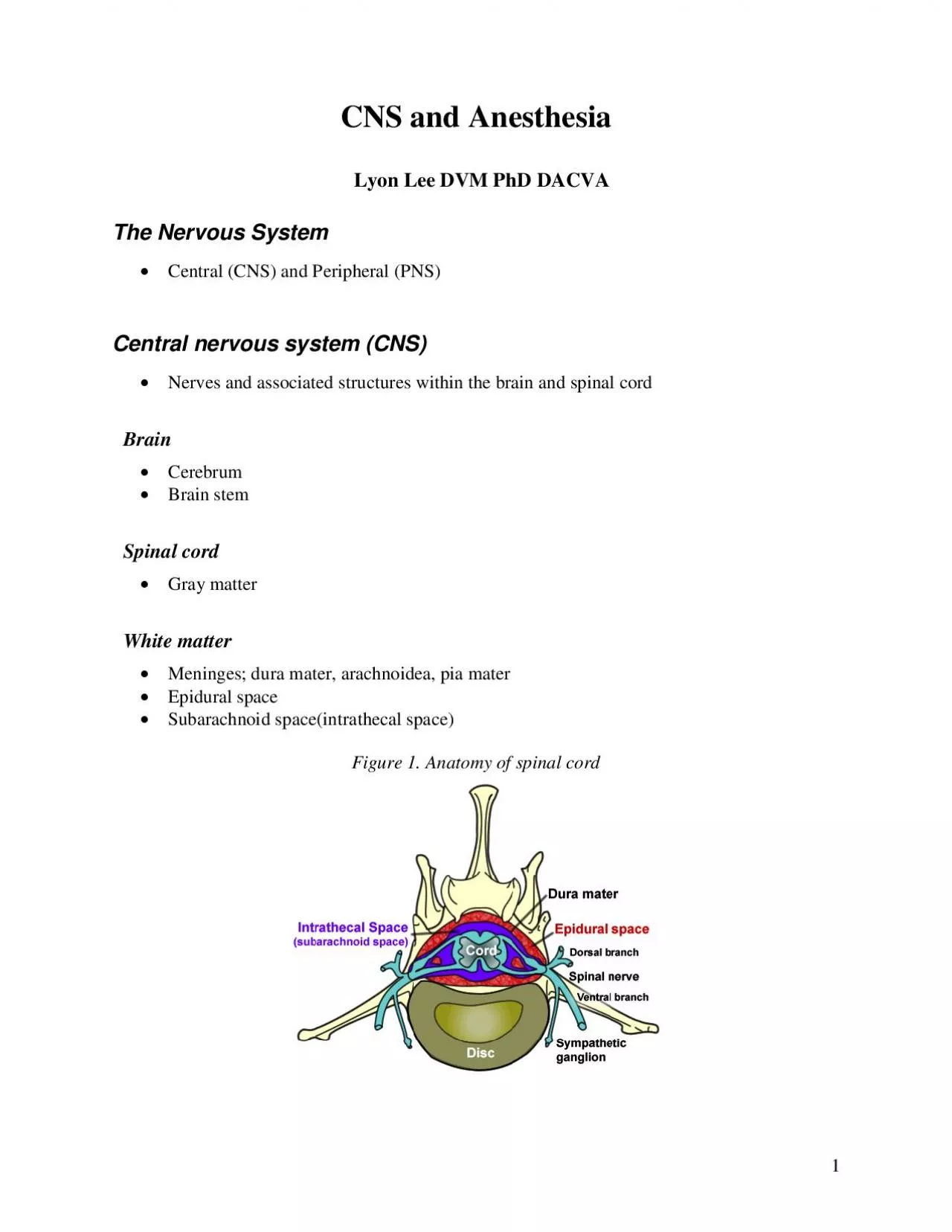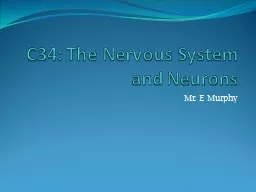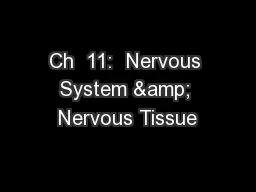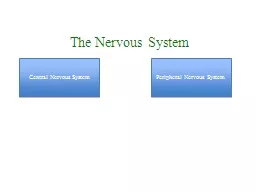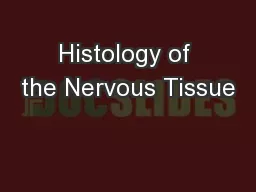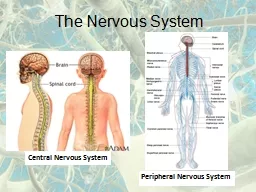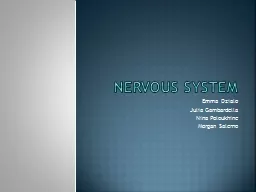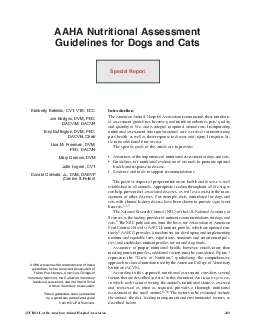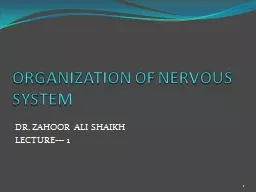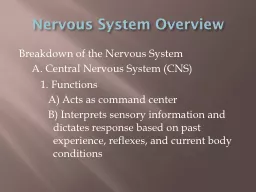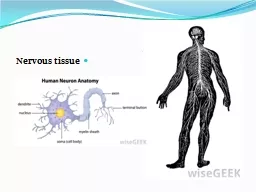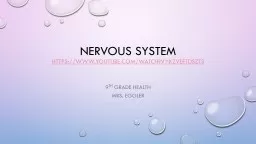PDF-CNS andAnesthesiaLyon Lee DVM PhD DACVAThe Nervous SystemCentral CNS
Author : reese | Published Date : 2022-08-22
1 2 CSFFormed at choroid plexuses in the ventriclesCushioning effectNormal 10 mmHg in pressure 1002 1009 in SG 732 in pHncreased productiondecreased absorption andorobstruction
Presentation Embed Code
Download Presentation
Download Presentation The PPT/PDF document "CNS andAnesthesiaLyon Lee DVM PhD DACVAT..." is the property of its rightful owner. Permission is granted to download and print the materials on this website for personal, non-commercial use only, and to display it on your personal computer provided you do not modify the materials and that you retain all copyright notices contained in the materials. By downloading content from our website, you accept the terms of this agreement.
CNS andAnesthesiaLyon Lee DVM PhD DACVAThe Nervous SystemCentral CNS: Transcript
Download Rules Of Document
"CNS andAnesthesiaLyon Lee DVM PhD DACVAThe Nervous SystemCentral CNS"The content belongs to its owner. You may download and print it for personal use, without modification, and keep all copyright notices. By downloading, you agree to these terms.
Related Documents

